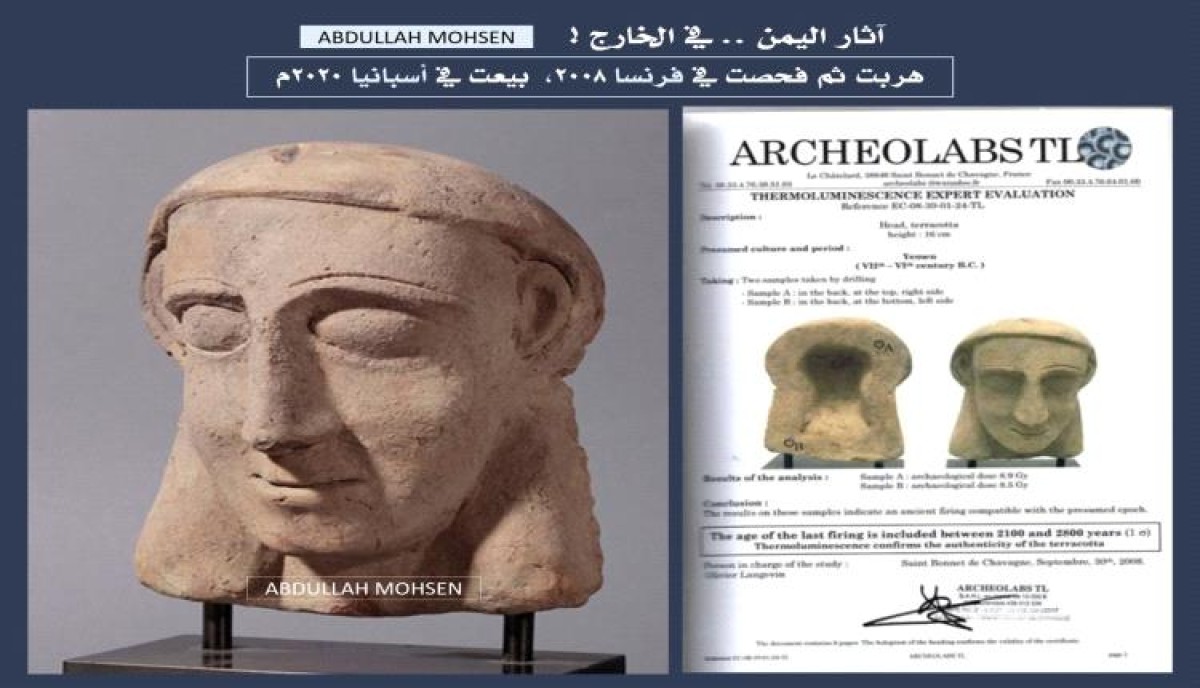Antiquities of Yemen...an escape from the country to France and then to Spain


The researcher and expert in antiquities affairs, Abdullah Mohsen, revealed the sale of a rare antiquity, from Yemen, after it was examined in France and given a certificate of authenticity from Spain.
Mohsen published a picture of an antique terracotta funerary stele from Yemen. He said that it had been smuggled to France and examined there in 2008 in Archaeolabs LT laboratories, a French company specialized in examining and verifying antiquities regardless of the method of obtaining them. A thermoluminescence certificate was granted, which confirmed the authenticity of the clay and that its last burning occurred between 2,100 and 2,800 years ago. After examination, it was determined that it dates back to Yemen between the seventh and sixth centuries BC.
He added: It was sold in France to a private English collection, then displayed at the Autumn Antiquities Auction in 2017 in Spain by GB Archeology of Ancient Art, accompanied by a certificate of authenticity issued by the Spanish Ministry of Culture. It was recently sold at the Ars Historica Spain auction on October 13, 2020.
He pointed out that the antique, according to the auction, is “a pottery plaque in the shape of a human head with large eyes and clearly engraved eyebrows. The prominent nose is also large. In contrast, the mouth is small and arched into a slight smile. The ears are clearly defined on either side.” The face. This type of terracotta or plaster can be found in both the National Museum in Sanaa and the British Museum, but there are only a limited number of them in existence. Pieces like these, unlike pieces made of limestone or alabaster, appear to serve a similar purpose as elements of Quite large funerary headstones, to which these faces were attached.”
He confirmed that this funeral tomb crossed the borders and customs of countries. It was inspected, promoted and sold. While the "Yemeni government" did not think about moving or following up.
Earlier, Mohsen said, “The scale of the phenomenon of smuggling Yemeni antiquities to Israel, France, Europe in general, and the United States is very large.”
He added that publishing on social media sites and the press is no longer sufficient to alleviate the severity of the phenomenon, and that the matter “needs the intervention of the Yemeni government in a practical and effective manner.”
The archaeological and historical cities in Yemen have been subjected to looting and random excavations throughout the past periods, the severity of which increased during the years of war, as Yemeni antiquities were subjected to smuggling, systematic destruction, and sale in public auctions around the world and on the Internet.